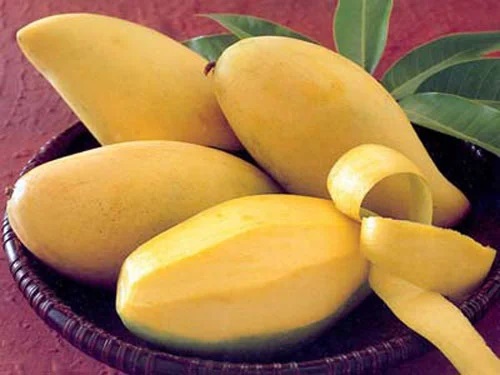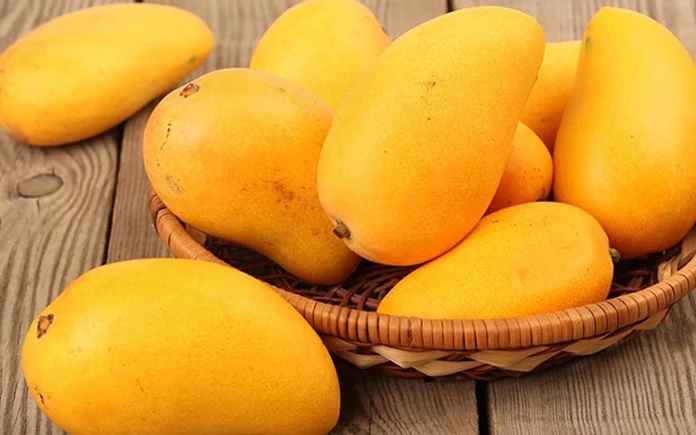Examining the Mango’s Skin
When selecting a mango, look for one with a uniform yellow skin, taut flesh, and no bruises or tiny dark spots. The mango’s stem should be firm, and the fruit underneath should not be soft or smooth; instead, the stem should be slightly sunken into the flesh.
Mangoes with uneven coloring, wilted stems, and tiny black spots on their skin are best avoided. These mangoes are typically unripe or ripened with chemicals, resulting in a less sweet taste than naturally ripened mangoes. They may taste sour or bland.
When it comes to green mangoes, choose those that are firm with a white waxy coating and a deep green color; these are the tastiest. Softer green mangoes are unripe and have a longer shelf life. Their taste is milder, and their flesh is less crisp.

Selecting Mangoes by Their Aroma
Ripe mangoes always have a distinct, natural fragrance. Ripe mangoes without preservatives have a sweet, intense aroma with a hint of essential oil. The scent of a ripe, sweet mango is pure and delicate, with the familiar, enticing fragrance of mango that makes you want to take a bite immediately.
Avoid mangoes that lack aroma or have an unnatural, chemical smell. These mangoes will not taste as good as those with a natural fragrance.
Choosing Mangoes by Their Firmness
When buying mangoes, gently squeeze them to check for ripeness. Ripe mangoes will have a certain firmness to their flesh, feeling secure when held, and will not turn mushy when pressed. The stem should be firm, and the flesh around it should be taut, not soft.
Avoid mangoes that are too soft and mushy; they have likely overripe and lost their crispness, resulting in a less tasty experience.

Proper Mango Storage
After purchasing mangoes, wash them thoroughly with water. Then, soak them in a mild salt water solution for about 5 minutes. Be careful not to soak them for too long, as it may alter the fruit’s composition. Next, use a soft cloth to clean the stem area, a common entry point for bacteria and mold that can cause spoilage. Finally, pat the mangoes dry with a towel and place them in a plastic bag, sealing it tightly before storing them in the refrigerator’s crisper drawer.
According to Khoevadep






























